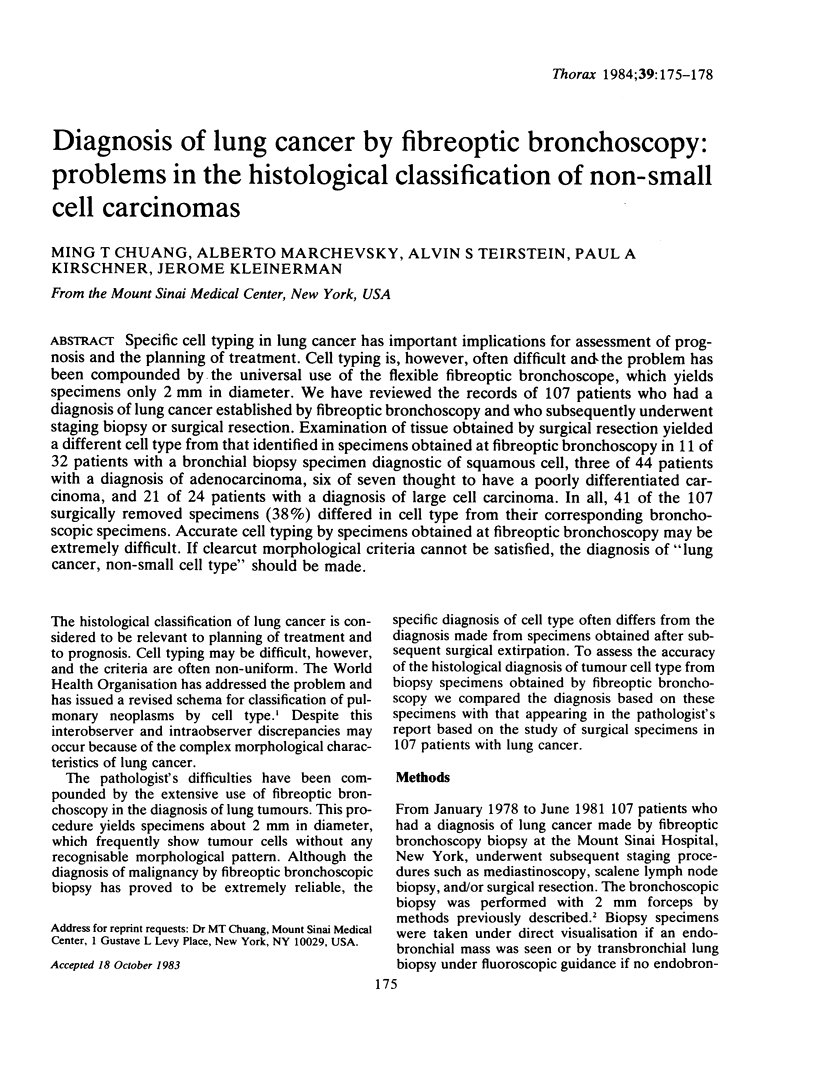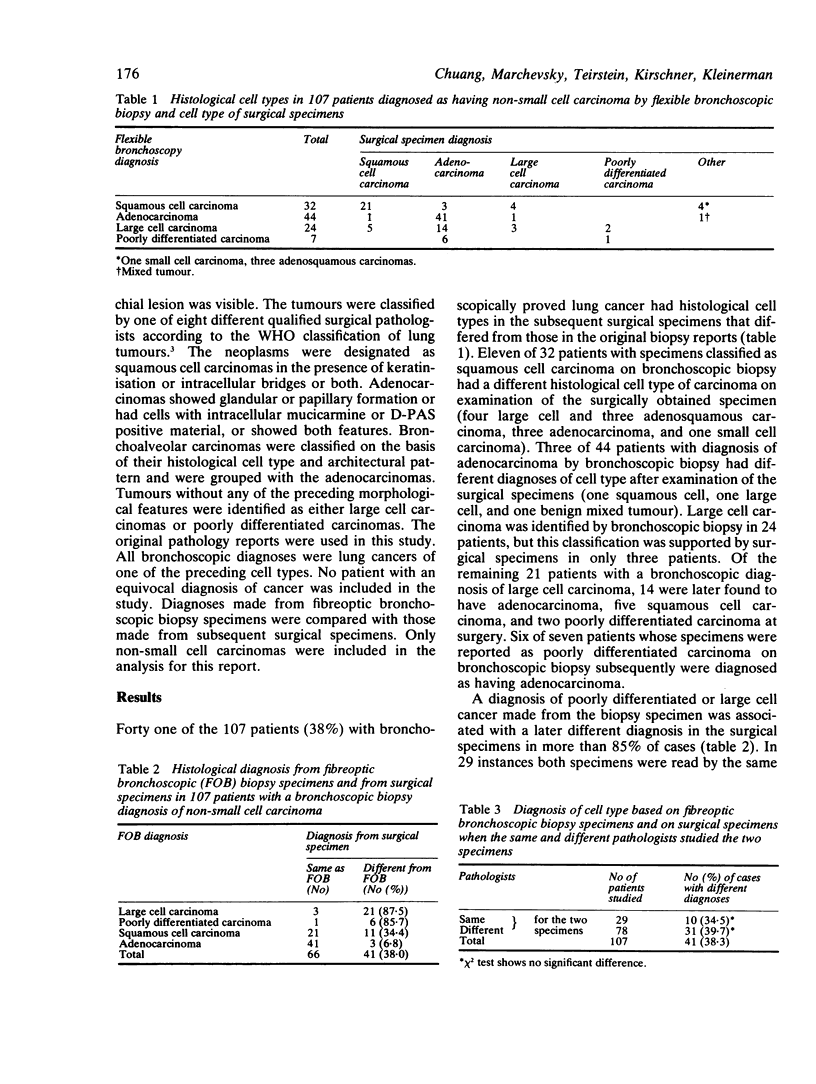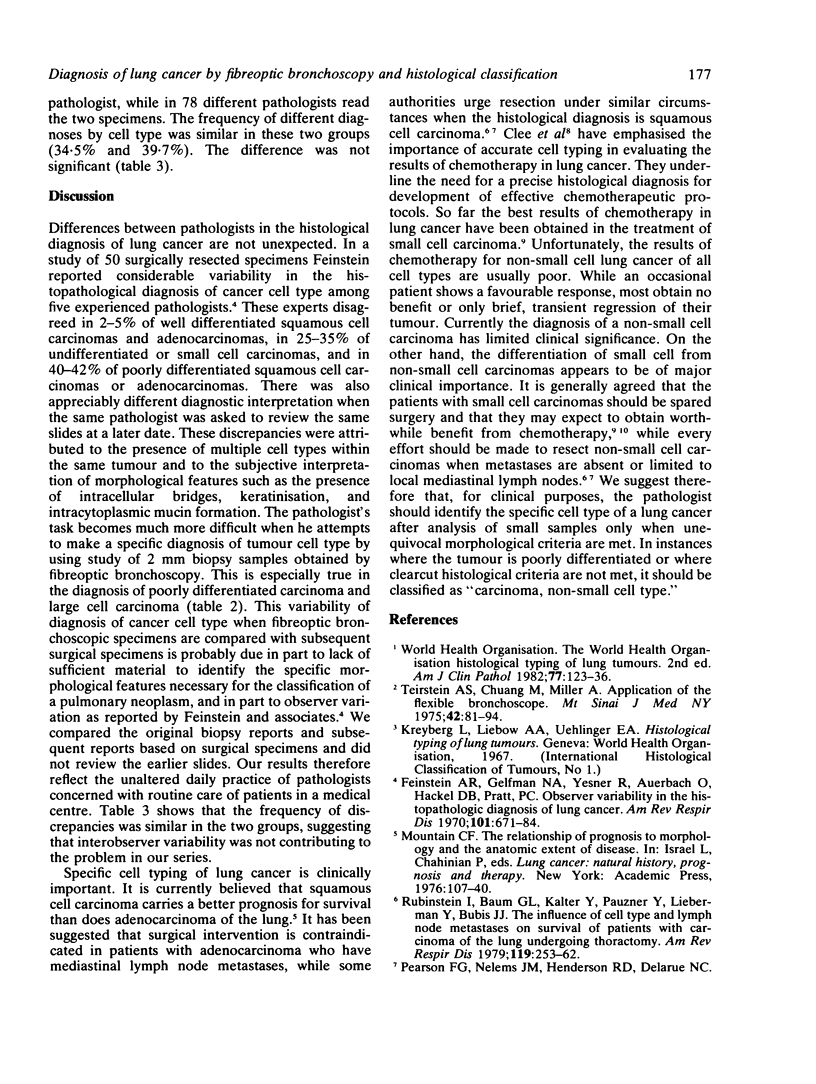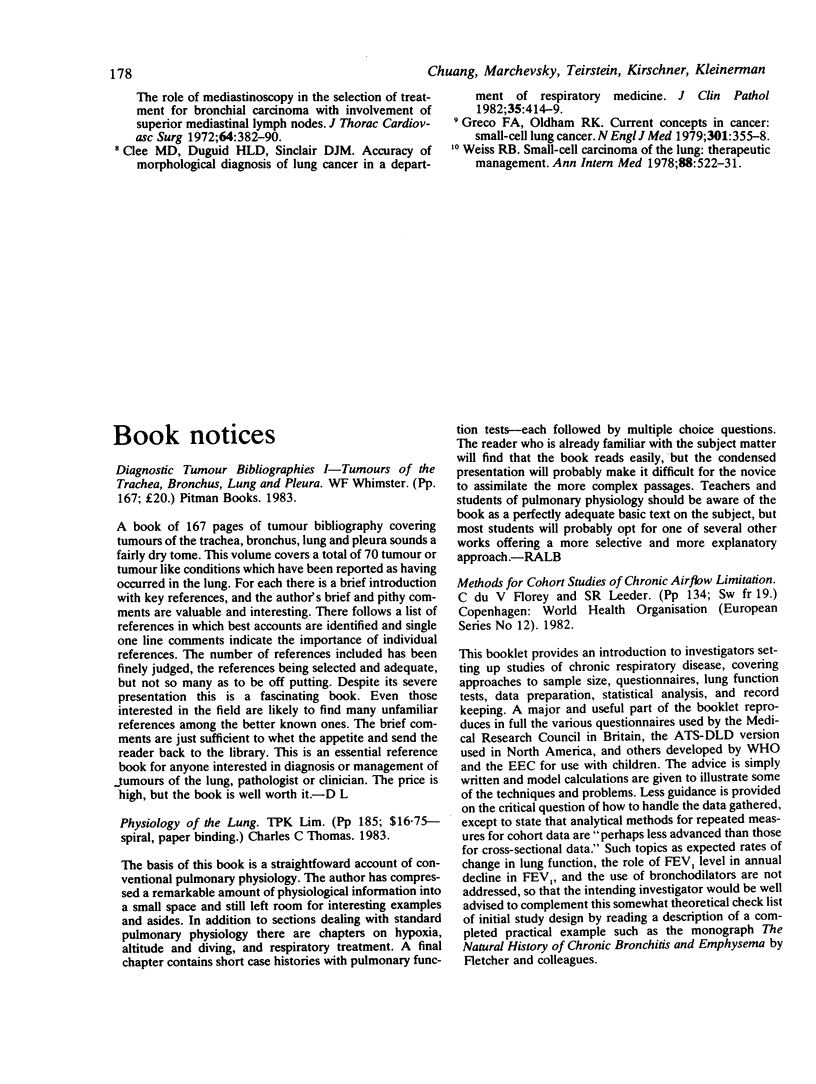Abstract
Specific cell typing in lung cancer has important implications for assessment of prognosis and the planning of treatment. Cell typing is, however, often difficult and the problem has been compounded by the universal use of the flexible fibreoptic bronchoscope, which yields specimens only 2 mm in diameter. We have reviewed the records of 107 patients who had a diagnosis of lung cancer established by fibreoptic bronchoscopy and who subsequently underwent staging biopsy or surgical resection. Examination of tissue obtained by surgical resection yielded a different cell type from that identified in specimens obtained at fibreoptic bronchoscopy in 11 of 32 patients with a bronchial biopsy specimen diagnostic of squamous cell, three of 44 patients with a diagnosis of adenocarcinoma, six of seven thought to have a poorly differentiated carcinoma, and 21 of 24 patients with a diagnosis of large cell carcinoma. In all, 41 of the 107 surgically removed specimens (38%) differed in cell type from their corresponding bronchoscopic specimens. Accurate cell typing by specimens obtained at fibreoptic bronchoscopy may be extremely difficult. If clearcut morphological criteria cannot be satisfied, the diagnosis of "lung cancer, non-small cell type" should be made.
Full text
PDF



Selected References
These references are in PubMed. This may not be the complete list of references from this article.
- Clee M. D., Duguid H. L., Sinclair D. J. Accuracy of morphological diagnosis of lung cancer in a department of respiratory medicine. J Clin Pathol. 1982 Apr;35(4):414–419. doi: 10.1136/jcp.35.4.414. [DOI] [PMC free article] [PubMed] [Google Scholar]
- Feinstein A. R., Gelfman N. A., Yesner R. Observer variability in the histopathologic diagnosis of lung cancer. Am Rev Respir Dis. 1970 May;101(5):671–684. doi: 10.1164/arrd.1970.101.5.671. [DOI] [PubMed] [Google Scholar]
- Greco F. A., Oldham R. K. Current concepts in cancer: small-cell lung cancer. N Engl J Med. 1979 Aug 16;301(7):355–358. doi: 10.1056/NEJM197908163010704. [DOI] [PubMed] [Google Scholar]
- Pearson F. G., Nelems J. M., Henderson R. D., Delarue N. C. The role of mediastinoscopy in the selection of treatment for bronchial carcinoma with involvement of superior mediastinal lymph nodes. J Thorac Cardiovasc Surg. 1972 Sep;64(3):382–390. [PubMed] [Google Scholar]
- Rubinstein I., Baum G. L., Kalter Y., Pauzner Y., Lieberman Y., Bubis J. J. The influence of cell type and lymph node metastases on survival of patients with carcinoma of the lung undergoing thoracotomy. Am Rev Respir Dis. 1979 Feb;119(2):253–262. doi: 10.1164/arrd.1979.119.2.253. [DOI] [PubMed] [Google Scholar]
- Teirstein A. S., Chuang M., Miller A. Application of the flexible bronchoscope. Mt Sinai J Med. 1975 Jan-Feb;42(1):81–94. [PubMed] [Google Scholar]
- Weiss R. B. Small-cell carcinoma of the lung: therapeutic management. Ann Intern Med. 1978 Apr;88(4):522–531. doi: 10.7326/0003-4819-88-4-522. [DOI] [PubMed] [Google Scholar]


